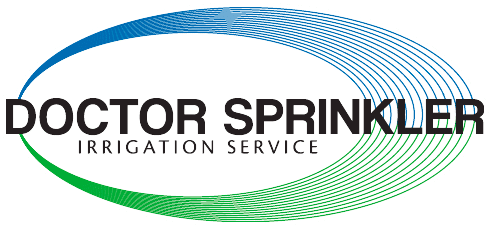How Can I Tell If My Irrigation System Is Damaged?
If you have an irrigation system installed in your lawn or garden, it’s essential to keep an eye out for any signs of damage or leaks. Detecting issues early on can save you from costly repairs and water wastage. This blog post will discuss how you can tell if your irrigation system is damaged and needs attention.
Unusually High Water Bill: A Telltale Sign of Leaks
An unexpected spike in your water bill often serves as the first hint of trouble lurking within your irrigation system. This surge in water usage, especially without an increase in your daily activities that justify such a jump, strongly suggests that water is escaping from somewhere it shouldn’t. Though invisible to the naked eye, underground leaks can significantly impact your utility expenses. These hidden problems can silently exacerbate, leading to an inflated water bill and potential harm to your property’s foundation and landscaping. Identifying this early can be crucial in averting more severe consequences. Recognizing such a discrepancy in your water bill warrants a closer inspection of your irrigation setup for any signs of leaks or damage that may be contributing to the increased costs.
Visible Signs of Irrigation System Damage
When assessing the health of your irrigation system, visible cues can serve as clear indicators of underlying problems. These manifestations of damage, if not addressed, could escalate, causing inefficiency and possibly extensive repairs. Begin by inspecting the condition of sprinkler heads and pipelines. Sprinkler heads that are visibly broken, misaligned, or fail to retract could signify internal or external damage affecting the system’s operation. Similarly, signs of cracking, blistering, or noticeable holes in the pipes demand immediate attention. These physical damages not only disrupt the uniform distribution of water across your landscape but can also introduce contaminants into the system.
Equally telling are persistent wet areas or unusually soggy patches on your lawn, which suggest a leak beneath the surface. Such spots often remain wet long after the system has been turned off, indicating that water is seeping out from a leak in the pipes. This can lead to over-saturated soil, negatively impacting plant health and potentially causing erosion or foundation issues. Monitoring for these visible signs of irrigation system damage is crucial in maintaining the longevity and effectiveness of your irrigation setup, ensuring your landscape remains healthy and vibrant.
Irregularities in Water Pressure and Sprinkler Performance
Fluctuations in water pressure and anomalies in sprinkler output often herald issues within an irrigation system. Uneven coverage, characterized by patches of dry grass alongside overly saturated zones, might indicate discrepancies in the system’s functionality. This variability in irrigation can stem from several problems, such as leaks that divert water away from its intended destination or blockages that restrict water flow to certain areas.
Additionally, sprinklers that exhibit erratic behavior, such as sputtering instead of providing a consistent spray or zones that fail to activate, highlight potential complications with the system’s valves or electronic controls. These symptoms undermine the efficiency of water usage and jeopardize the health and aesthetic appeal of your landscape. Persistent disparities in watering patterns necessitate a thorough inspection of the system to pinpoint and address the underlying causes. In cases where manual assessment doesn’t reveal clear-cut evidence of the problem, employing advanced diagnostic tools or consulting with irrigation experts can provide a more accurate diagnosis. Addressing these irregularities promptly can prevent minor issues from escalating into major, cost-intensive repairs, ensuring that your irrigation system maintains optimal performance.
The Sound of Running Water When the System is Off
Hearing the unexpected sound of water flowing when your irrigation system is inactive is a telltale symptom that should not be overlooked. This audible clue often means water is being lost through a breach in the system’s integrity, potentially due to cracked pipes or malfunctioning sprinkler heads. The consequences of ignoring such a signal can be far-reaching, leading to a significant waste of water and possible damage to the landscape that depends on a balanced and controlled supply of moisture. This scenario might emerge even when there is no visual evidence of a leak, making the sound of running water an important diagnostic tool in its own right. It is a sign that demands immediate investigative action to uncover hidden leaks that are not readily apparent upon visual inspection. The persistent flow of water in the absence of operational sprinklers can also contribute to soil erosion, create conducive conditions for pests, and encourage the growth of mold and fungi, all of which can have detrimental effects on the health and appearance of your landscape. Addressing this issue promptly can avert unnecessary expenditure on water and prevent the escalation of damage to your irrigation infrastructure and surrounding environment.
Using Professional Services for Diagnosis and Repair
When facing challenges with your irrigation system, the complexity and potential for further damage often necessitate professional intervention. Specialized service providers possess the necessary tools, technology, and expertise to evaluate the system thoroughly, accurately identify any issues, and execute repairs with precision. Attempting to address these problems on your own can be daunting and might lead to temporary fixes that don’t solve the underlying issue or, worse, exacerbate the problem. Professionals in the field are equipped to conduct comprehensive diagnostics, including pressure tests and electronic evaluations, to locate leaks or damages not easily visible to the untrained eye. Moreover, their experience with various brands and systems ensures that they can handle a wide range of problems, from simple adjustments to complex system overhauls. By engaging experts, you also benefit from their insights on preventive maintenance, which can significantly extend the lifespan of your irrigation setup and enhance its efficiency. Opting for professional diagnosis and repair services ultimately safeguards your investment, ensuring your landscape receives optimal watering without the wastage of resources or the risk of further damage.

